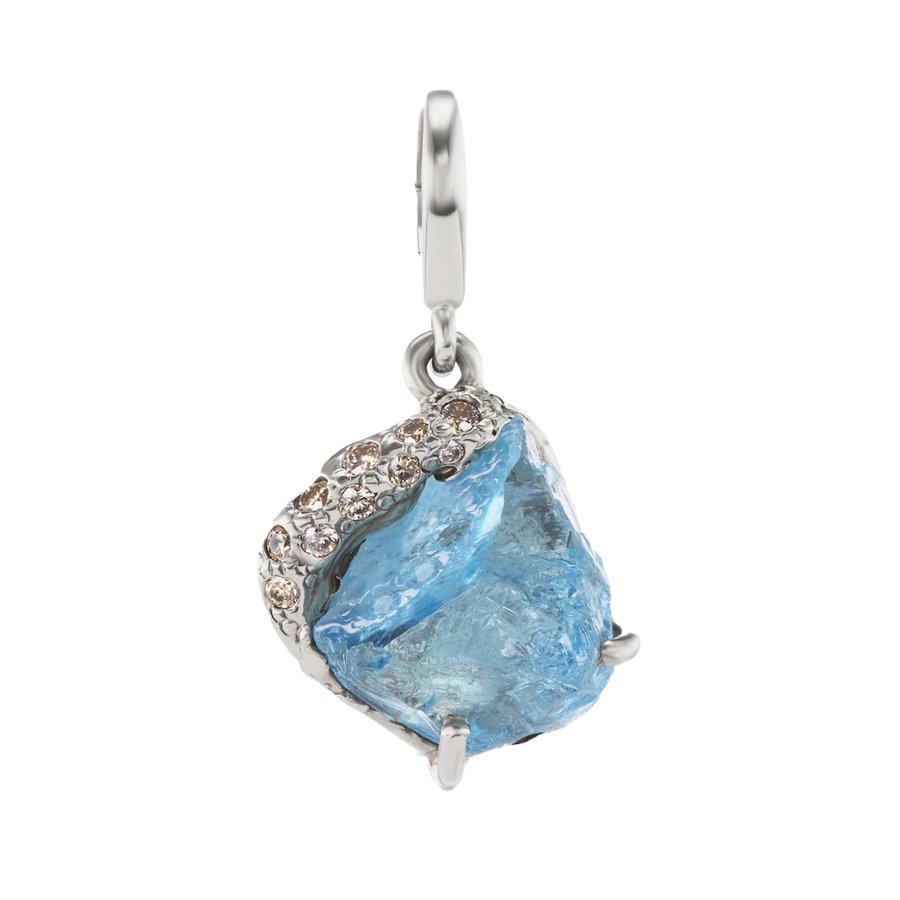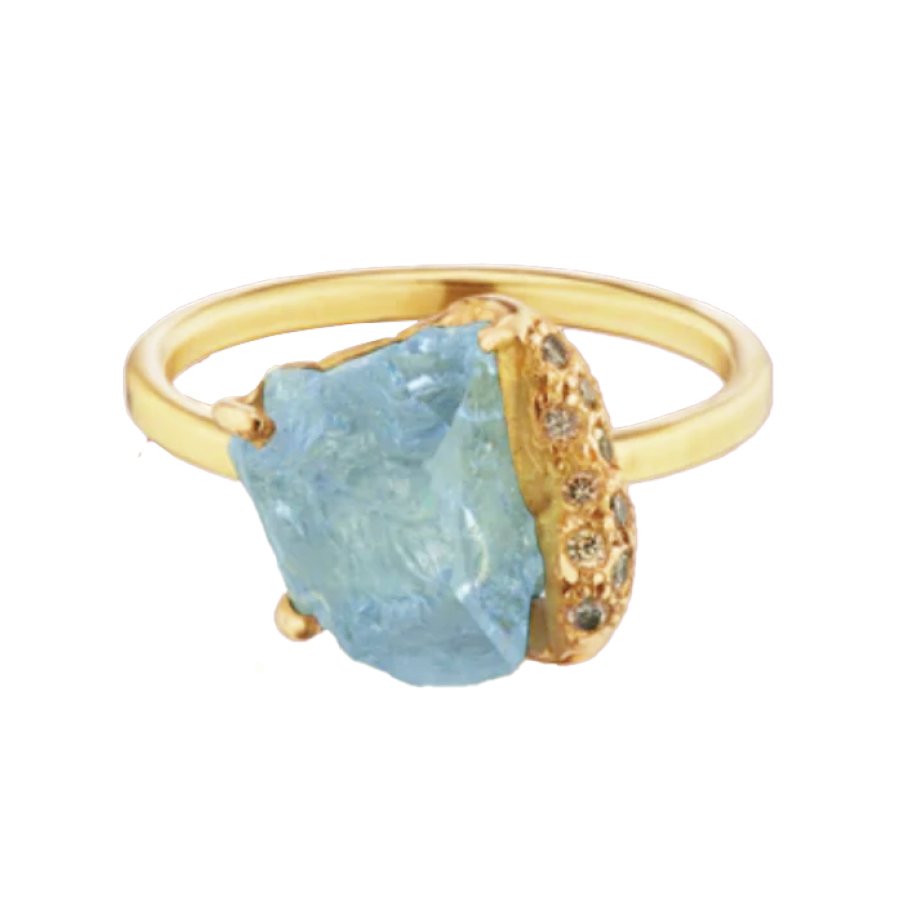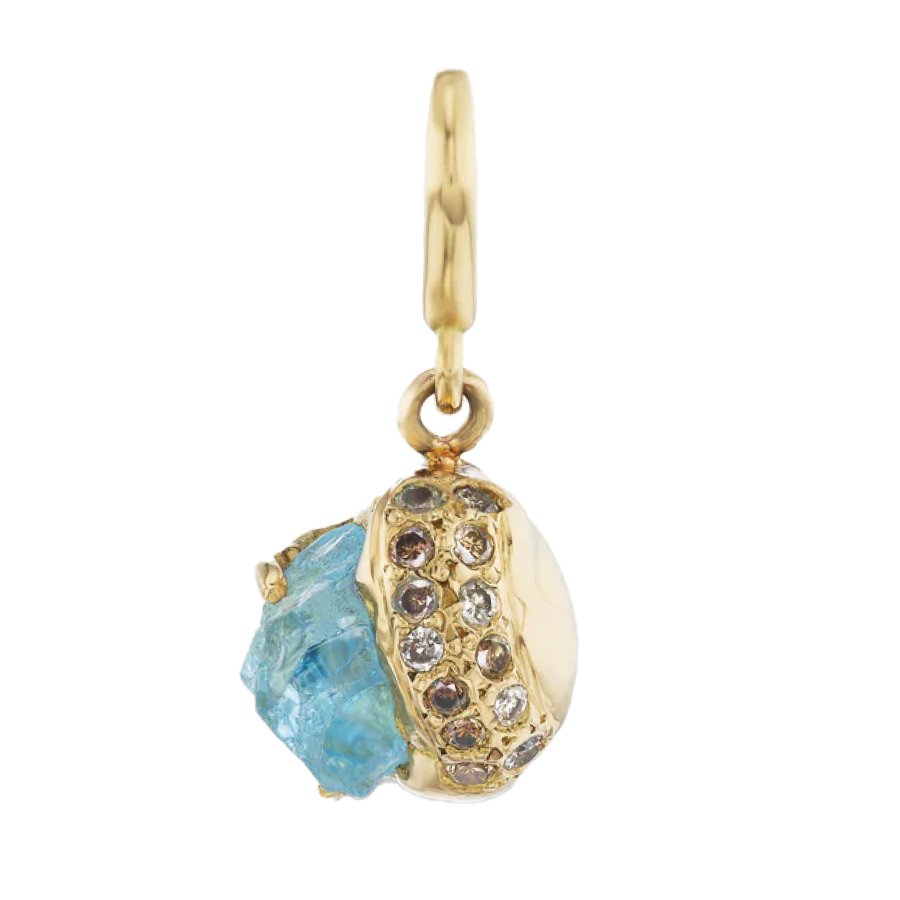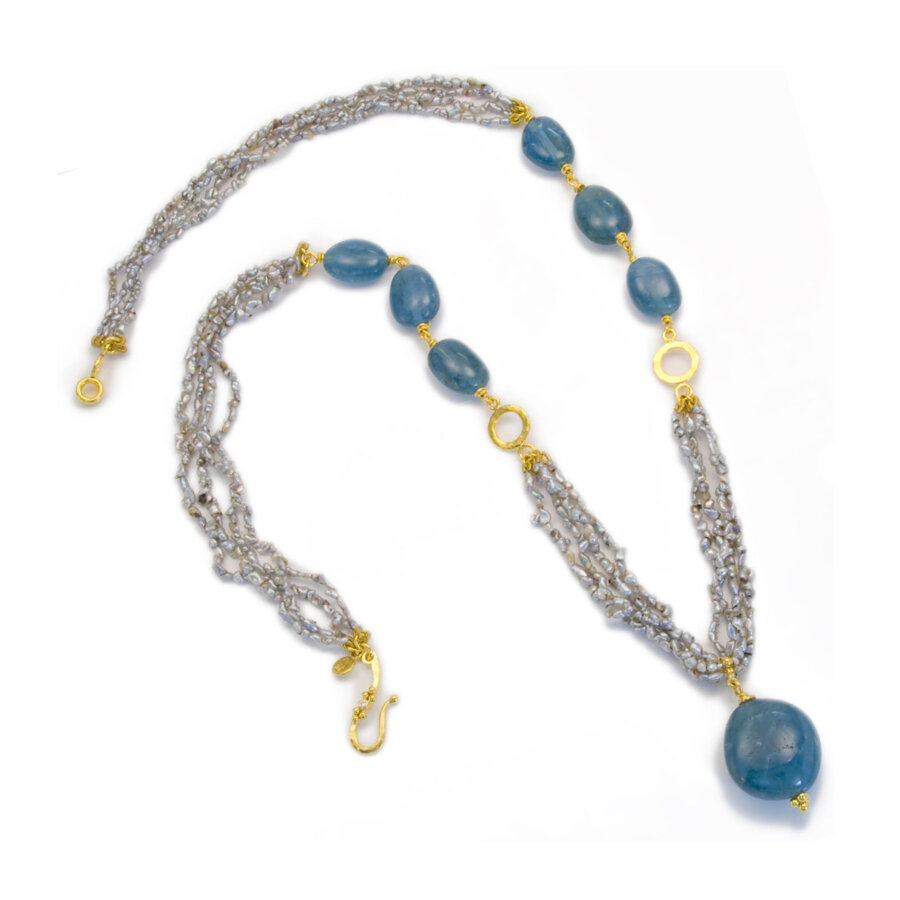SHOP DESIGNER AQUAMARINE JEWELRY
Manifesting your intentions with aquamarine
This gemstone attracts calm, inner peace, and courage. It is also associated with cleansing and spiritually letting go.
Just as our ancient ancestors believed gemstones were imbued with special properties, such as protection, wisdom, or courage, today we are empowered by the metaphysical properties of gemstones to manifest what we wish to create.
You may be interested in our guide to visualize your intentions through the metaphysical properties of gemstones and jewelry.
What does AQUAMARINE JEWELRY symbolize?
Many ancient cultures believed it would ensure safe and successful travels to sailors - and offer protection from seasickness and sea monsters. Aquamarine is a variety of the beryl family, so think of it as emerald’s blue cousin! Get the skinny and shop a curation of jewelry, thoughtfully designed by women…

WHAT IS AQUAMARINE?
It first appears in Greek historical record (in lapidary form, no less) around 480 – 300 B.C. Then, it was referenced as “sea-green beryl”.
It was the sacred jewel of Poseidon (Greek) and Neptune (Roman), whose origin was from the treasure chests of mermaids. Roman philosopher Pliny (the Elder) wrote: “the lovely aquamarine, which seems to have come from some mermaid’s treasure house, in the depths of a summer sea, has charms not to be denied.”
To Egyptians and Sumerians, it symbolized happiness and eternal youth. During the Middle Ages, it was used for divination and very much in vogue as the most potent material for crystal balls.
We’ve outlined points to help you understand value and what to ask to make an informed decision on a piece of jewelry you will LOVE!
LOOKING AT WHERE TO BUY AQUAMARINE JEWELRY TO AMPLIFY YOUR PERSONAL STYLE?
Whether you are the chairwoman of the board, the CEO of your household, or an industry changemaker, you will be seen and taken seriously with our hand-picked jewelry curations. The Brilliant Concierge can guide you in buying jewelry that reflects your style or a jewelry gift she will love and wear. Discover a recent “quest” for a birthday gift with a story.
What color of aquamarine is the most valuable?
This gemstone can exhibit a range of blue hues. The most plentiful specimens have a pale blue or slightly greenish-blue. Among the most prized are those with an intense, deeply saturated blue or slightly greenish-blue. The more intense, pure, deep color, the higher the value.
Aquamarine is found worldwide in mountainous regions with Brazil being the largest source. It is also mined in Africa, India, Pakistan, South America, Russia, and North America.
Noteworthy is the most celebrated location: Santa Maria, Brazil. While the mine has been closed since the late 1930's or early 1940's, it produced greatly revered material with stunning rich blues.
What to know about aquamarine - and discerning jewelry designed by WOMEN!
The origin of gemstones: TRACEABILITY
The breathtaking gems you see here are courtesy of Nomad’s. Just as we know where our food comes from and who made our clothes, why not jewelry?
Below is an example of their proprietary Provenance Report, demonstrating their commitment to transparency, trust, and traceability. Beyond the descriptive details about each gemstone, the report discloses the history of the origin and a specific gemstone’s journey to the cutting wheel - literally mapping and disclosing the supply chain.
A sample report outlining details of a single Nomad’s gemstone, as well as the history of origin and traceability story.
What does ethically and sustainably sourced jewelry mean?
Women and men at the forefront of this global conversation will have slightly different perspectives, but there is a shared ethos: responsible sourcing.
This encompasses traceability, conflict-free, protecting people, their skills, and the environment - be it land or sea.
An ongoing initiative worth following is the Jewelry Glossary Project.
The purpose is to create shared definitions of key terms within the jewelry industry for use by the trade and the public. The project was launched to increase transparency throughout the supply chain, by building consensus on definitions for key terms and creating accountability for their usage.
Meet Debra Navarro’s responsibly sourced aquamarine jewelry
As your fine jewelry guide, I can help you acquire:
cockrings to signet rings
long drop earrings to studs
pendants to layering necklaces
statement bracelets to cufflinks
responsibly sourced gemstones
Read more about our specialized services.
Heat treatment is an accepted practice and is the “norm”.
In its natural form, most gem material tends to have a bluish-green color. The pure blue hue we are most familiar with is primarily achieved through heat treatment. Treatment of any kind with any gemstone should always be disclosed.
As unheated gemstones are rare, its market value is greater than that of heat-treated stones.
The MOHS SCALE:
How hard is AQUAMARINE?
hard, but a diamond would scratch it
The Mohs scale of hardness is important to consider when choosing a particular stone for a particular kind of wear.
It is the degree of mineral “hardness”, measured by the resistance which a smooth surface offers to abrasion: 1 (soft) to 10 (hard). For example, an 8 will scratch a gemstone that is a 7 or below. Simply put, the softer the stone, the more careful you need to be about wearing that stone in jewelry that may be exposed to more wear.
Does aquamarine scratch easily?
This is a question you’re most likely to ask when buying gemstones and jewelry. Knowing how hard it is (or any other stone) will help you to determine whether it is an everyday gemstone or an occasional piece.
Aquamarine is harder than quartz at 7.8 - 8. This means it is a gorgeous candidate for everyday rings, versus softer gemstones that can be more susceptible to everyday scratches and damage with accidental bumps.
How to care for aquamarine jewelry
A few jewelry care basics can keep your pieces looking their best, avoid damage and loss of gemstones.
WEAR: When dressing for day or night, jewelry should be the last thing on and the first thing off. Contact with chemicals such as fragrance, hairspray, nail polish remover, household cleaners, and chlorine can harm jewelry.
Remove jewelry when cleaning, gardening, swimming, or playing sports, as contact with hard surfaces can scratch, damage, or loosen stones in prongs.
CHECK SETTINGS AND STONES: Inspect jewelry before wearing it to check if the stones are chipped, loose, or rattle in settings.
CLEANING: All precious metals, gemstones, and pearls should be cleaned regularly, but require different care. For example, ultrasonic cleaners can crack opals, shatter pearls or diminish their appearance. Avoid using steam and ultrasonic cleaners.
● For gemstones on the Mohs scale at 7 or above, a simple cleaning solution is warm water with mild soap and a soft toothbrush. For those at 6 or below, replace the toothbrush with a tightly woven microfiber or other soft cloth.
● A soft polishing cloth will keep any precious metal looking its best.
● Take any investment pieces to a trustworthy professional jeweler once a year for a thorough cleaning and inspection.
● See our full guide to How To Clean Fine Jewelry.
STORAGE: Keep jewelry individually stored in a pouch or box to avoid scratches and abrasions from other gemstones and metal, as well as general tangles and dents.
INSURANCE: For any jewelry of significant value, be sure to have it appraised, file any provenance and gemstone report in a secure place, and be sure to have it insured.
JOIN OUR COMMUNITY OF WOMEN LEADERS
Sign up: Step into our inner circle for style tips to amplify your visibility, inspiring conversations with women leaders, and insider access to jewelry that celebrates your story and inner power.



















